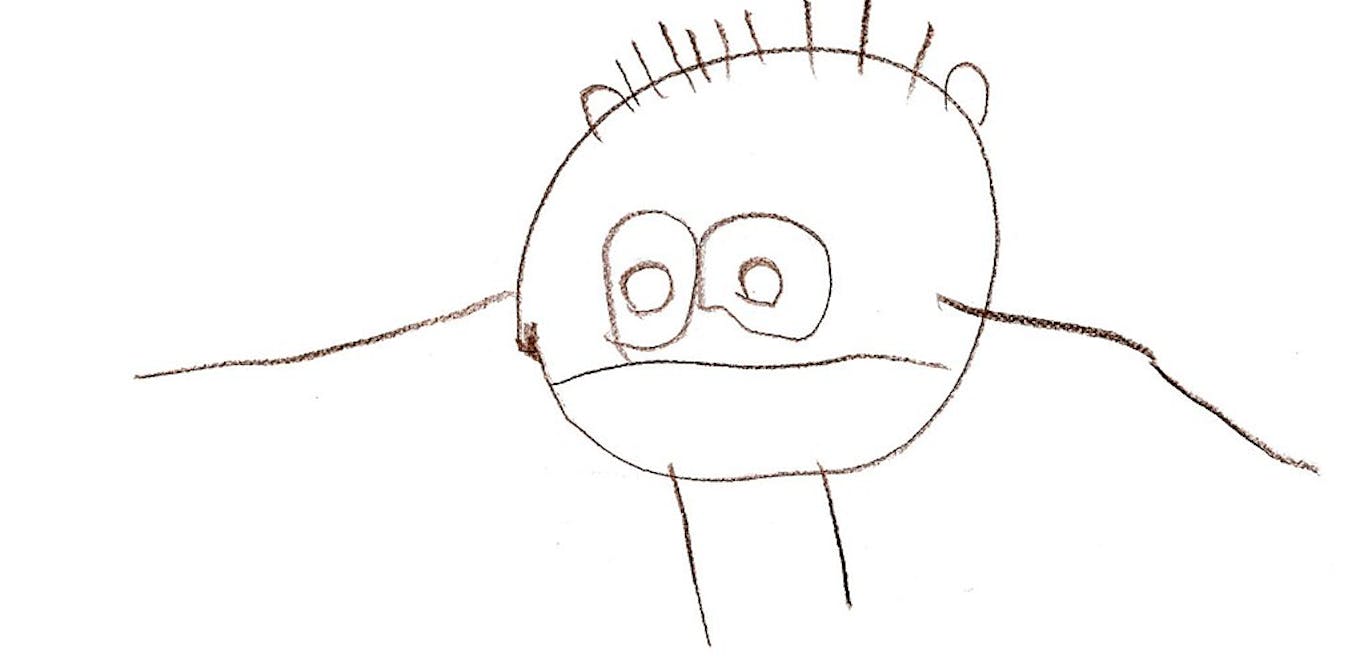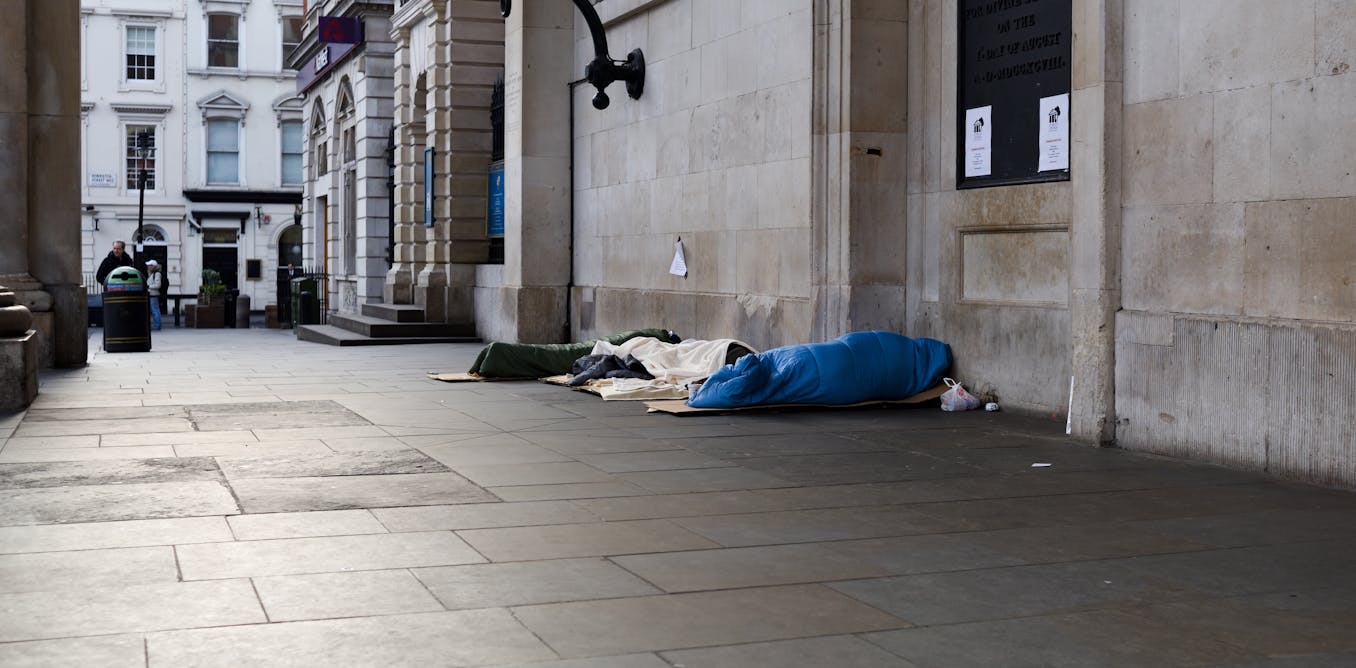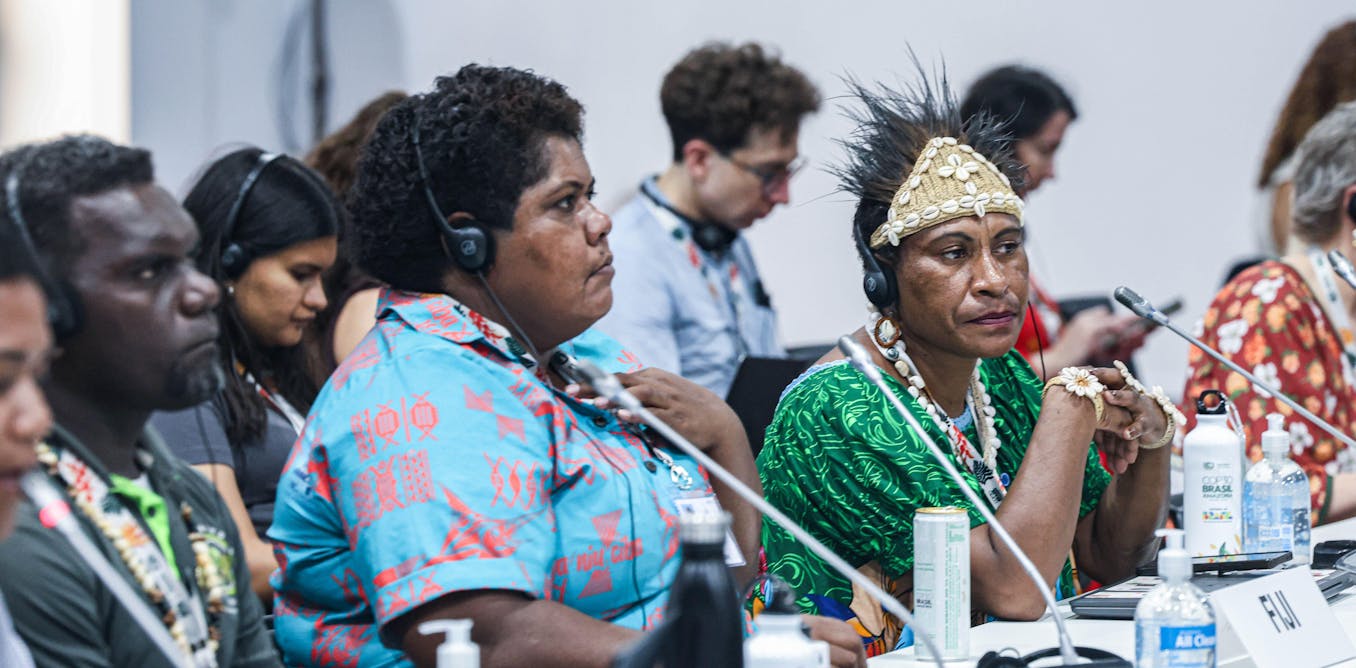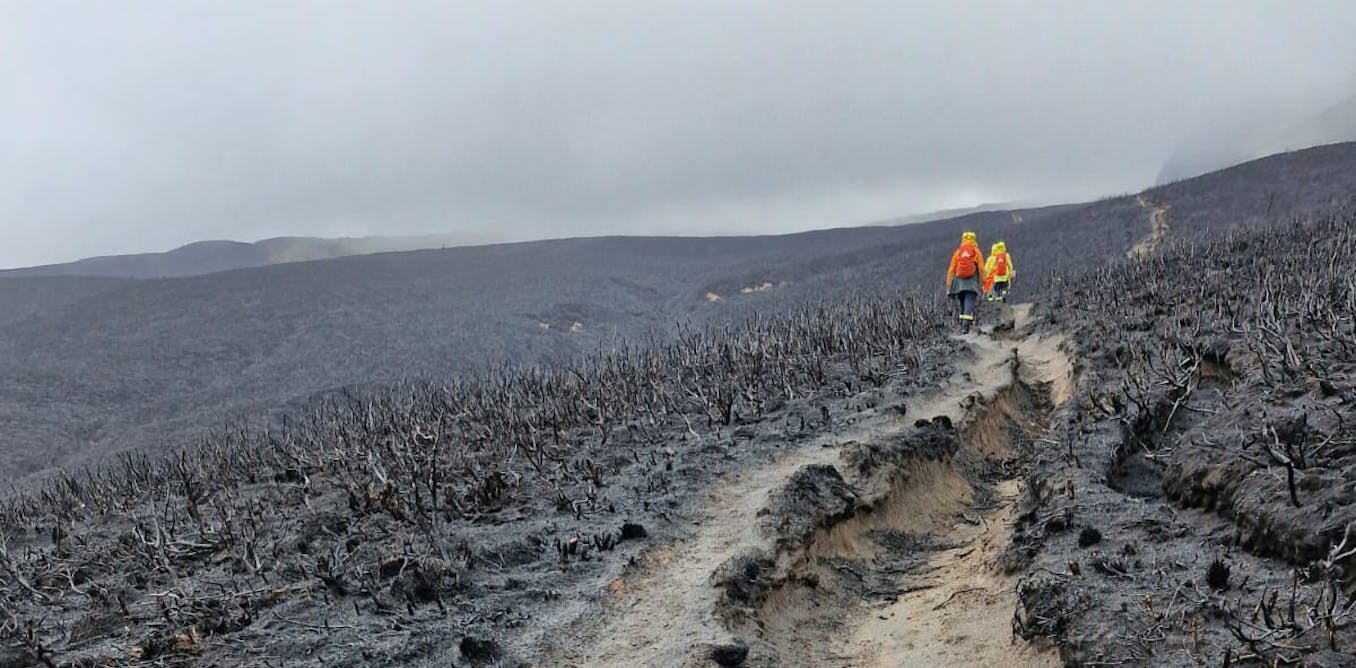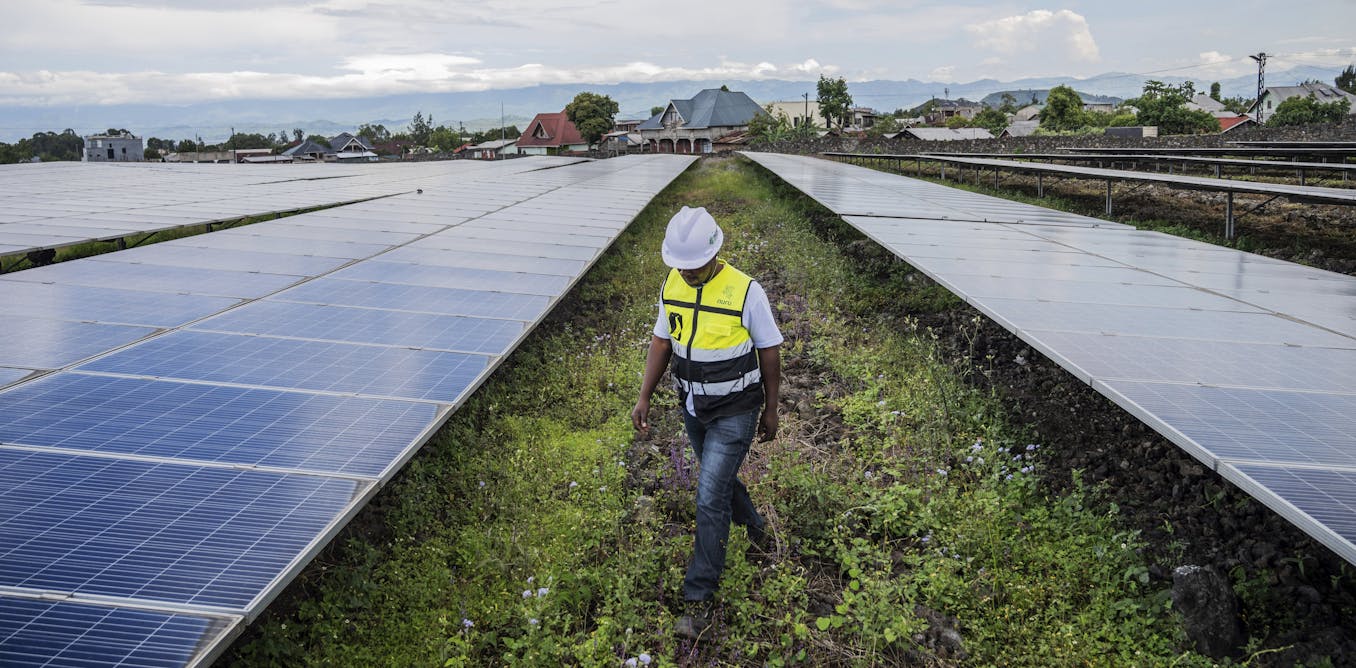Fashion designers from Africa are celebrated in Paris, London and New York. Whether avant-garde or traditionally inspired, these designers often share a focus on social and environmental sustainability. And they’re enjoying great successes.
For a long time, designers from Africa or with African roots were hardly present on the catwalks of the western fashion world. That has changed radically. From street style to haute couture, these designers are known for combining their sometimes-avant-garde designs with a rich tradition of textile techniques and patterns.
In Lagos, Adebayo Oke-Lawal challenges gender roles with his label Orange Culture. Senegalese designer Selly Raby Kane dissolves the boundaries between fashion and art. And in Cape Town, Lukhanyo Mdingi focuses on social responsibility with his brand. These designers share a passion for creating local, economically sustainable structures. For them, it’s about great style, jobs and education. Things are changing as a result: While most of the region’s designers are self-taught, in Dakar, fashion designer Sophie Nzinga has opened West Africa’s first school for fashion design.
Africa’s fashion design avant-garde is diverse and headed for success. From the African continent’s metropolises to the classic fashion strongholds of Paris, London and New York, they’re making their mark — and showing their work at the most important fashion weeks. In this film, eight designers provide insights into their creations of tomorrow.
#documentary #dwdocumentary
______
DW Documentary (English): https://www.youtube.com/dwdocumentary
DW Documental (Spanish): https://www.youtube.com/dwdocumental
DW Documentary وثائقية دي دبليو (Arabic): https://www.youtube.com/dwdocarabia
DW Doku (German): https://www.youtube.com/dwdoku
DW Documentary हिन्दी (Hindi): https://www.youtube.com/dwdochindi
Whether it’s androgyny, whether it’s women, whether it’s couture, whether it’s handmade pieces, whether it’s sustainable pieces, African designers are doing it everywhere. So I think you’d be remiss to not include us in anything. It’s your loss. Like, we are so diverse as Africans, ourselves, the vibrancy of things,
Which I think you know hasn’t been captured a lot by the West. The world needs us. The world needs Africa. Give all these young designers a chance. Africa’s future Saint Laurents and Paco Rabannes, give them a chance! For a long time, the work of African designers was absent at international fashion shows.
But that’s finally changing: today, their creations are conquering catwalks in Paris, London, and New York. Fashion designers from Africa or with African roots are setting new trends with provocative and visionary work. Major cities like Lagos, Cape Town, and Dakar all have thriving fashion scenes.
The collections are meant to showcase the value of our own living spaces. The people have something to say, and they’re being heard. And the whole world is interested. Our moment right now within Black creative designers and artists, particularly right now, is so important, because there’s so much visibility around it
And there’s so much honesty around it. So I understand the position that I hold, and I know that my fellow peers understand their position too. What you do, not only does it affect the way people see themselves it creates an opportunity for people to engage.
It creates an opportunity for people to feed back into communities. So I think sometimes people just diminish the power of fashion, but it holds a lot of power. Optimism, connection, visibility. The Black Lives Matter movement brought Black-owned businesses to the forefront reaching more people on more platforms.
Many artists are upending stereotypes and fighting misconceptions. The stereotype is usually around the fact that people expect the work to be very traditional. And for me, that needs to go. There’s always this sort of narrative about how we are supposed to be perceived as Africans.
Oh, we’re poor, we can’t produce anything good, we’re corrupt. Yes, we do have issues like any other country, but we also are beautiful people who are talented, who are intelligent, who are gifted. Taking control of their narrative and showcasing Africa’s diversity: That’s what drives some designers on the continent and in the diaspora
In European capitals like Paris or Berlin. It’s simply time to hear different voices and tell different stories. I think that’s why this Black Movement is very much in the mainstream right now, because it’s time for it plain and simple. What makes fashion that’s “Made in Africa” stand out?
Who are the rising stars on the scene and who’s carved out a place at the top? And what values do they share? Africa is a continent of 54 countries, 1.4 billion people, and thousands of languages. It’s impossible to label its fashion scene in narrowly defined terms. When talking about ‘African fashion,’
We need to talk about African fashions, African styles, African trends. They’re vastly different from one country to the next. Fashion in Senegal is different from fashion in South Africa. It’s different from Nigerian fashion because the people are different. Just like in Europe. There’s no such thing as “African fashion.”
There’s fashion by African designers. Bold and experimental, clothing lines are being used to rewrite narratives. They reflect the self-confidence of a vibrant continent, finally getting the recognition it deserves. On the international stage, they’re trendsetters. In Africa, they’re breaking with clichés and playing with traditional dress codes, social norms, and gender roles.
When I was younger, I was always told that fabrics were very specific to gender, like, oh, you have to use a specific fabric for guys, specific fabric for women, specific fabric for you know, all of that stuff. And for me, when I was creating,
I always wanted to wear clothes that were not necessarily suited to those specific genders. So I was like, oh why can’t I explore this? Who tells me that chiffon is for women? Who tells chiffon is for men? I don’t see any gender marking on any of these fabrics.
In 2011, Adebayo Oke-Lawal launched his brand, Orange Culture. His designs confront toxic masculinity. He uses his platform to fight for diversity and inclusion. I remember, our first collection we did, we had, like, chiffon shirts for men, and we had, like, prints colors for men’s trousers,
Which every man is wearing now, by the way. And people were like, this is horrible. You are feminizing our men. Oh, make a suit. Because men are supposed to wear suits in this particular color, in this particular shape. But for me, choosing colors, choosing fabric, was always about questioning things and asking, why?
Why not? Why can’t you? Why shouldn’t we? Why is this the belief? Why is this the stereotype? And that’s how it all came about. Adebayo Oke-Lawal doesn’t shy away from politics. One of his collections addressed police violence in Nigeria and demonstrations against SARS, a notorious police unit.
We also like to deal with, you know, things that sometimes near political because of where we live. We had a collection last year that caused a lot of commotion because we’re talking about the protest, the End SARS protest. And we did a whole show, you know,
That had even people like protesting in the background around the sound and you know, people be worried about why we were doing that. But I mean, I feel like as a brand, you have to be able to confront these things and make statements around these things. Fashion by avant-garde designers is attention-grabbing
And not inexpensive by African standards. Finding local customers is a challenge, for young labels especially. Many Africans who can afford exclusive labels tend to buy high-end European brands. Social media has really been a blessing because it’s helped us connect to the international market in a way that
We would have never been able to do before, because you will not just get the mass customer here, because everyone is still trying to align themselves with that sort of bold take on fashion. So I think you have to be able to open yourself up to a global audience.
Creatives are wielding social media to their advantage. They interact constantly, with the world and with each other. With millions and millions of smartphones on the continent, people can document their lives and show what they’re doing, much more easily than before. Fashion has always been seen as a very exclusive industry
That was hard to get into, and I think that intimidated a lot of consumers and made them feel left out. So I think social networks have played a huge role in democratizing fashion. The way social media is helping us understand each other is essential,
Because in the past, when some big fashion house produced something somewhere, it would say “Bangladesh” on it or “Made in China,” and we didn’t really know what that meant or how the people there lived, and maybe we didn’t really care. But nowadays, it’s a click away and you can know instantly
How people live and what their working conditions are like. There’s a desire for transparency and greater social consciousness. It’s not just about the clothes. As much as I love beautiful objects and beautiful things, it’s seeing how can a sense of sincerity and honesty be woven within the brand DNA.
And that, to me, can only be done through human relationships. We are a collective. Whether it’s through the craft, whether through the creative vision, whether it’s through the stylist that I’m working with, whether it’s through the business side of things. How can we partner ourselves with human beings that are gifted
Within whatever particular field that ever they do and they too can expand and grow within the Lukhanyo Mdingi brand? That is the foundation of who we are. Lukhanyo Mdingi uses South African mohair in his garments and works with traditional textile techniques. He produces locally as much as possible which also creates jobs locally.
He collaborates with women-led workshops and collectives in the outskirts of Cape Town. What we’re trying to do with design, specifically through textile development, is working with these extraordinary groups of mothers and women that look exactly like my mom. And to see how they can create something that’s still quite tactile and artisanal,
But in a modern way, but also expanding that into business and seeing how business essentially can lead on to social impact. So it’s not a case of just designing an object or designing a textile, but it’s saying, how can that translate into adding onto somebody’s livelihood so they can provide for their families?
For the first time in his career, Lukhanyo Mdingi is showing a collection at the “Prêt-à-Porter” fashion week in Paris. The pieces, hand-crafted by the women from Cape Town, were well received in the world capital of fashion. I love knowing that that integrity is literally within the artisanal textiles that they are essentially creating.
The young designers know they’re paving the way for the next generation. Every single decision that I’m making, it’s not just only for my team. It’s also understanding that there is another 10-year-old Lukhanyo who wants to follow in the same trajectory that I am right now.
Because I know what it’s like to be that kid looking and not being able to find that person. Cape Town and Johannesburg are among South Africa’s fashion capitals. There are also thriving scenes in Accra, Ghana and of course Lagos, Nigeria. And for a long time, the capital of Senegal
Was considered the fashion capital of Africa. Dakar Fashion Week, started by designer Adama Paris in 2002, was once the only event of its kind. Now several African capitals offer innovators opportunities to showcase their creations. There’s a desire for a new directions. But we didn’t start that.
On this continent, fashion has long gone beyond the realm of commerce. It’s traditionally been attached to cultures, rituals, and initiation rites. Selly Raby Kane blurs the boundaries between art, fashion, and film. When I’m starting a collection, I begin by watching films. I immerse myself in music that inspires me.
And then I write I write a little story. And from there, I develop the clothing. Her inspiration comes from folk art, pop culture, African mythology, and Dakar, where she lives and works. The brand is like a collection of all the things that have inspired me
Since my childhood: the horror films of my youth, my interest in comics and animals my love of contrasting materials, and references to the intangible and tangible heritage of Dakar. I draw from all those things which are anchored in my basic essence, in Senegal and Dakar.
She houses a studio, event location, and boutique, all under one roof. It took her years to build up a steady clientele. I think what makes a brand special is that it stays true to itself, regardless of what happens. And that’s not easy to do because there’s a lot of pressure to sell.
You can be tempted by what’s “in” and incorporate that into your pieces that’s perfectly normal. But don’t dilute your DNA to the point that it becomes unrecognizable. Lagos is home to 15 million people. It’s an economic hub and vibrant metropolis. People say: If you can make it here, you can make it anywhere.
Lagos is one place where your life can change overnight. The designers here are very brilliant, and it’s a highly competitive space, so I think everyone is expected to bring their A-game. You know, people will turn their attention to you when they feel like you have something substantial to say.
It’s so many different factors. It’s music, it’s the fact that a lot of diasporans are more interested in finding out what’s going on back home. It’s also the fact that the social media has made the conversation even louder and impossible for you to ignore what is happening in this part of the world.
In a book about his city, stylist and photographer Daniel Obasi creates imaginative, visual narrative, where freedom of expression is celebrated. It’s not only fashion designers who are expanding people’s perceptions of Africa: Fashion photographers and stylists play a critical role in bringing their visions to life.
The book really focuses on my understanding or my interpretation or my surreal perspective on Lagos, the concept of politics, you know, the concept of activism, the concept of queer rights, and the concept of feminism. And just like trying to create a space for young people or people
Of a minority to be able to have their voice heard or just be celebrated. Cities offer the perfect arena for experimentation. Stylists and photographers diminish the line between art and fashion photography. Their work defies definition. I feel like when people talk about the African aesthetic, they always feel like, oh,
It should have these very generic themes and stuff. But I don’t think that’s the case anymore. Like, there’s so many layers to the aesthetical work that people put out. People are not trying to create work to fit into certain boxes anymore. They’re just creating work that is their own work.
The stories you’re going to tell are stories that are unique to your Black experience. My experience is different from so many people’s experiences. And I think people just want to be seen for that, you know, for the story they’re telling of their life or whatever they’re going through with their work,
As opposed to being, oh, wow, because it’s quite restricting to tell people to always create within from a point of view of a Black artist. Lagos-based designer Kenneth Ize managed to break into the international scene a few years after launching his label. Born in Nigeria, he moved to Austria at a young age
But later returned to his homeland. One of the most successful designers in Africa, he was nominated for the prestigious Louis Vuitton Prize in 2019. I got into LVMH. The day I was leaving from Lagos it was for me, such a dream like come true,
Like I had dreamed about that day to happen in my life that I did not even know it was going to happen. And all I thought about was to just go with a free mind, free spirits. Don’t determine to win, but make sure you make friends and everybody there has to have friends.
So that’s what I did. And that has helped me so much in the industry. Kenneth Ize is known for working with aso oke, a handwoven fabric traditionally worn for special occasions. He uses it to create clean-cut and colorfully-striped slim silhouettes.
When I was a kid, you know, I’d hide myself in my mom’s closet and wear all her outfits. And when someone is trying to get into the room, I’ll change everything and try to get away. Everything I’m doing now, it’s like I’m going back to those memories and I’m recreating from it, honestly.
And that’s where I got it from. His team produces aso oke at his textile factory in western Nigeria, now one of the largest weaving factories in the country. I believe that there is a sense of identity in craftsmanship. It comes from somewhere. It speaks a language, and it’s evolving.
I think we should start embracing what we have also from home. People don’t really see such value in this woven fabric. But it’s really changing so fast, in the past two years now, it’s incredible. And I think it’s going to keep changing, people are starting to wear this fabric to weddings again.
And I’m happy to see that. Celebrities like Naomi Campbell are among the fans of his work, which reinterprets and thereby revitalizes handwoven fabrics. His creations sell in high-end boutiques all over the world. For me, luxury is really anything and truly anything that doesn’t make the next person feel less human.
And I believe that the job that we’re doing is an example of that. Fashion has always been a form of art for Africans. A variety of fabrics and cloth reflect centuries-old artisan traditions and are an important marker of cultural identity. But in the mid-19th century,
These traditions were at risk of being wiped out. What is “African fashion”? I don’t think there is such a thing. People always imagine these very colorful wax prints. But that didn’t even originate in Africa. It was brought to Africa through colonial structures, by way of Indonesia and the Netherlands.
It’s just one byproduct of colonialism on the continent: wax print, an industrially produced product, presented serious competition to traditional African textiles. These fabrics became “African fabrics” because Africans wore them so much. That’s how it became the fabric of Africa. And that suppressed the true heritage of African textiles.
For a long, long time, we couldn’t tell our stories the way we wanted to especially in fashion. Our countries became independent sixty years ago colonialism is not that far in the past. It’s a wound not yet healed. If you look at our history, all those things were there.
You know, they were there before we were colonized, they were there, it’s like our culture was taken from us, and now it’s like lost over time, and now we’re having to talk about this what already existed and should still exist. Like, celebrate it and celebrate the beauty that it is.
After the colonial era ended, some African fashion designers renewed their focus on traditional fabrics. One of them was Chris Seydou, who in 1972 left Mali for Paris, where he worked with Paco Rabanne and Yves Saint-Laurent. His collections combined Western cuts with traditional fabrics like bogolan. In the 1980s, Nigerian designer Alphadi
Began celebrating both the modern woman and traditional African craftsmanship in his collections. His creations were showcased at fashion shows in Paris, London, and New York. Ly Dumas, a designer from Cameroon, rose to fame in the 1990s and she continues to advocate for the preservation and recognition of traditional African textile techniques.
But many other early fashion designers from Africa are still unknown in the West. Back when I was a model, there were very talented designers, but you never saw them during Fashion Week. Or if you did, it was at an off-show event, and they weren’t around the next season. That’s how it was.
Nothing ever lasted. But Imane Ayissi did manage to break through. A designer living in the diaspora and working with handcrafted materials, he’s brought awareness to the diversity of fashion in Africa. Since 1992, Imane Ayissi has been designing elegant and very feminine silhouettes, combining sensuous textiles from Europe and Africa.
There are wonderful things in this package from Cameroon. The moment you have the fabric in your hands is very emotional. Because that is really the moment when you see the quality of the material, the fabric, and the result of all the work that’s gone into it. Imane Ayissi is from Cameroon.
He and his collection, “Akouma,” or “Wealth,” were included in the official Paris Haute Couture calendar in 2020, the only designer from sub-Saharan Africa to be given the honor so far. He combines Italian silk or French lace with handcrafted African textiles, working with natural materials from the continent, such as tree bark or raffia.
Handmade is a form of luxury. I don’t want that to disappear. We can continue to develop it, even modernize it. Africa has always been an open theater of color, forms, and elegance. And the world needs Africa. His 2022 haute couture fall-winter collection was called “Miyené,”
Which means “to be seen” in the Ewondo language of Cameroon. Europe has always had a problem granting Africa access to the world of luxury. We’ve always been the consumers of other people’s luxury. The time has come for Africa to take the realm of fashion,
The business of fashion, seriously, because it’s not just a show. It’s a show with a huge economic engine behind it. High-end fashion catering for young people is booming in Africa. Concept shops selling African luxury fashion are opening in big cities, with some platforms urging consumers to “Buy African.”
But getting a foothold in the market isn’t easy. We’re competing on an international level and you’re competing with brands that have had industries that have been around for 300 years, 200 years – I’m exaggerating obviously, but you get what I mean. They have machinery. They have technology. They have the labor.
They have the education. They have the skills. And your clothes are being put in the same stores as brands who have done that. So we’re having to compete on that level with much less. It’s like you’re starting from nothing and having to create for people
Who are expecting everything and that’s kind of difficult. It’s about pursuing their dreams. Most designers are self-taught From a practical level, we don’t have art schools here. We don’t have design schools. People have to really, really want to be artists or to be photographers,
Or to be designers, to be able to pursue that dream. A lot of times when you’re pursuing that dream, you’re pursuing that dream by yourself. As a child, I remember seeing a documentary about Naomi Campbell and in it, she talked about her world and what she did.
I was maybe seven years old, and I was excited to see a Black woman have that much of power in such an exclusive milieu. That’s when I became interested in fashion. But I always knew that I wanted to tell a different story, the story of African fashion. And that’s how I started.
In most African countries, there’s not much support, state-funded or otherwise, for the fashion industry. There’s little opportunity to receive formal training in the field. Sophie Nzinga Sy studied fashion design in New York before launching her Prêt-à-Porter label in Dakar in 2012. Her creations are worn in Africa and the West,
And her label is a reference point for contemporary Senegalese fashion. I always knew I wanted to combine fashion with development. That’s how the idea of the Dakar Design Hub came about when I returned to Senegal in 2013. In 2021, Sophie Nzinga Sy founded the first fashion school in West Africa.
The courses cover a range of topics, including craftsmanship, digital communication, and business management. My vision is to introduce new curricula and teach future African designers. To give young people the opportunity to learn fashion the way it’s taught all over the world be it in New York or anywhere else.
They shouldn’t have to travel to another continent because they can’t find a fashion school here. In this school, what we want to do is create leaders. I think leadership is important – it’s about self-confidence. Then there are also technical aspects, like in all fashion schools, drawing, understanding color, et cetera.
And environmental awareness is also important. It’s part of our design philosophy to tie in all aspects of ethical and sustainable fashion. Because designers also need to be aware that this is an industry that pollutes, and we must find solutions. Just as these African fashion designers work in socially sustainable ways,
They want to produce in ecologically sustainable ways too. We don’t have the same carbon footprint as H&M. It’s not the same volume. The impact on the world is smaller. In terms of clothing production, there’s no comparison. We know the names of our tailors. We source our fabrics ethically.
All of our material creation processes are very sustainable, very ethical, you know what I mean. So it’s like when people are telling me, oh, go to here and learn this about sustainability, I’m like Dude, I should be teaching you about these things! So Africans have held this for so many years
And have held the power of sustainability and ethical processes and sustainable practices. So I think that we’re honestly the heralders of such power. When you buy something, it should to last a long time. And if it doesn’t, there are thousands of different ways to repair it or repurpose it.
I find it very exciting that Africa can actually teach us a lot in this regard, because the idea of resourcefulness and sustainability is much more deeply rooted in the culture there than it is here. In Africa, sustainable production models are being hindered by an industry that floods the market with cheap textiles.
For decades, used clothing from around the world has been dumped on Africa, to the detriment of the local textile economy. Fast fashion in this aspect, it’s just the absolute height of consumerism and capitalism. For me, it is devoid of any value.
You buy something, it doesn’t matter who made it or where it came from. It’s only briefly in style. We wear it and the next summer we toss it in the clothing collection bin. And we know where it ends up. Sydney Emeka Nwakanma is also part of the young African diaspora,
Many of whom are looking to reconnect with their roots. It was in Nigeria that he got the idea for his upcycled label EMEKA. He creates the patterns in Berlin and buys his fabrics at secondhand markets in Africa. A consequence of this secondhand textile system is that it’s putting tailors out of work.
The local textile industry is suffering more and more from the fact that Europe’s fast fashion system is spilling over into Africa. We go to these secondhand textile markets and look for fabrics that can still be used. Then we take the material to our tailoring collective.
First it’s washed, then we cut the pieces according to the patterns, then we give those to the tailors who sew them together. And, yeah, that’s how our clothes are made! The label’s first upcycled collections feature suits that are unisex, comfortable, and contemporary. Clothes carry so much meaning.
We have to give them back that meaning which has been lost through fast fashion. Confident and assertive, designers in Africa and the diaspora are changing the international fashion world. But few waste their time thinking about how long the attention will last in this fast-moving industry… To me, people have been creating their work,
People will still keep creating their work. If a spotlight wants to stay, it can stay. If a spotlight wants to move, it can move. How we see ourselves is very important. Like we as Africans need to start embracing anything that we are and take it fully as ownership.
It’s interesting that the outlook is changing right when people have more means to present their truth and stick to it. It’s difficult to say what is the reason as to why there’s so much attention, but I can say that there is attention. And I think it’s wonderful.
And I think we’re in a position where we’re able to really tell our truth in the most authentic and honest way. African fashion is here to stay! Absolutely. No more going back this is it! This is it. These fashion designers embody a progressive and innovative Africa in all of its diversity.
They’ve seized control of their own narratives and are showing the world just how many stories are still left to be told. What matters is that every designer should find a way to contribute to the country that they are building from. I think it’s very important because at the end of the day,
You have to give back. You’re taking from, so you have to also give back. That’s the way we grow. So that’s what I believe.
Video “Fashion design from Africa, popular around the globe | DW Documentary” was uploaded on 12/28/2023 by DW Documentary Youtube channel.








